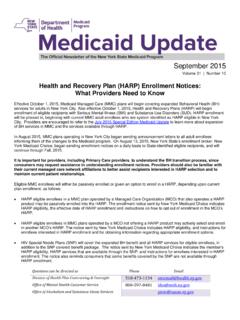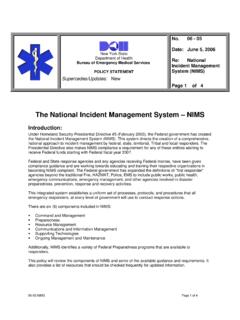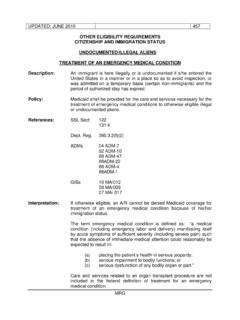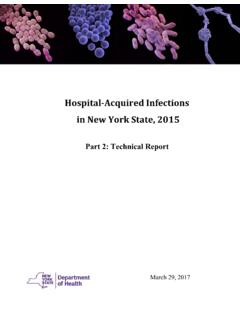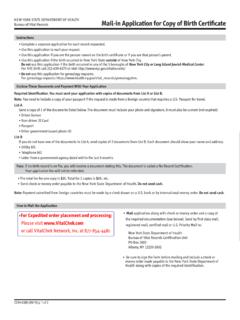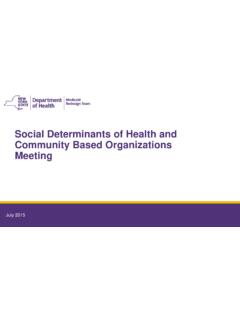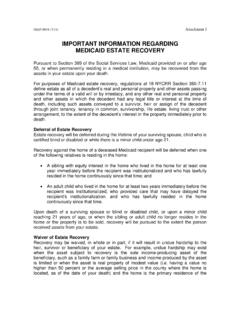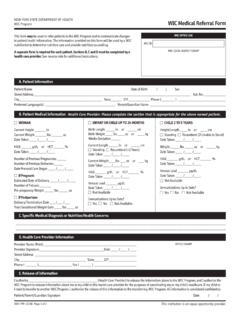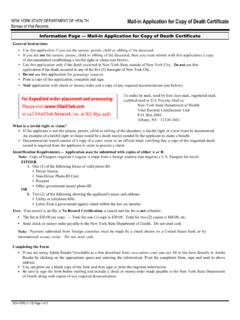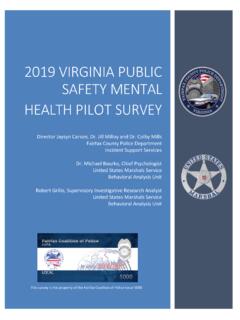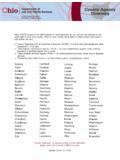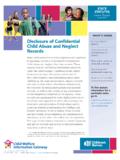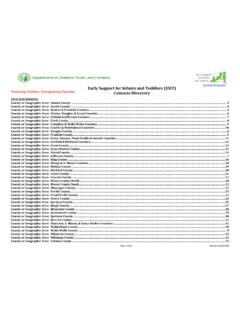Transcription of New York State - County Opioid Quarterly Report
1 New york State - County Opioid Quarterly Report Published July, 2017 New york State department of health (This page is intentionally left blank) Table of Contents Introduction ..5 Albany County ..7 Allegany County ..9 Broome County ..11 Cattaraugus County ..13 Cayuga County ..15 Chautauqua County ..17 Chemung County ..19 Chenango County ..21 Clinton County ..23 Columbia County ..25 Cortland County ..27 Delaware County ..29 Dutchess County ..31 Erie County ..33 Essex County ..35 Franklin County ..37 Fulton County ..39 Genesee County .
2 41 Greene County ..43 Hamilton County ..45 Herkimer County ..47 Jefferson County ..49 Lewis County ..51 Livingston County ..53 Madison County ..55 Monroe County ..57 Montgomery County ..59 Nassau County ..61 Niagara County ..63 Oneida County ..65 Onondaga County ..67 Ontario County ..69 Orange County ..71 Orleans County ..73 Oswego County ..75 Otsego County ..77 Putnam County ..79 Rensselaer County ..81 Rockland County ..83 St. Lawrence County ..85 Saratoga County ..87 Schenectady County ..89 Schoharie County ..91 Schuyler County .
3 93 Seneca County ..95 Steuben County ..97 Suffolk County ..99 Sullivan County ..101 Tioga County ..103 Tompkins County ..105 Ulster County ..107 Warren County ..109 Washington County ..111 Wayne County ..113 Westchester County ..115 Wyoming County ..117 Yates County ..119 Bronx County ..121 Kings County ..123 New york County ..125 Queens County ..127 Richmond County ..129 Methods ..131 Acknowledgments ..137 Introduction In response to the growing Opioid public health crisis, Governor Andrew M.
4 Cuomo convened a Heroin and Opioid Task Force in May 2016. This group was charged with developing a comprehensive plan to fight against this epidemic in New york The Task Force gathered perspectives and information from communities across the State to produce a comprehensive Report with actionable recommendations to target heroin and Opioid One recommendation highlighted the need to improve the reporting and use of heroin and Opioid data collected to help spot trends and respond to local needs. This recommendation was included in a comprehensive package of bills signed by Governor Cuomo, intended to combat Opioid and heroin issues within the State by focusing on prevention, education, treatment, and Prevention efforts include improving timely Opioid overdose reporting to key stakeholders.
5 This information is a valuable tool for planning and can help identify where communities are struggling, help tailor interventions, and show improvements. In accordance with the recommendations and legislation, the New york State department of health (NYSDOH) is providing Opioid overdose information (deaths, emergency department (ED) visits,and hospitalizations) by County in this Quarterly Report . The reported cases are based on the County of residence. Opioids include both prescription Opioid pain relievers such as hydrocodone, oxycodone, and morphine, as well as heroin and opium.
6 This Report does not fully capture the burden of Opioid abuse and dependence in New york State . The New york State Office of Alcoholism and Substance Abuse Services (OASAS) is providing data on unique clients admitted for heroin and unique clients admitted for any Opioid . This information comes from the OASAS Client Data System (CDS). The CDS collects data on every person admitted to an OASAS-certified chemical dependence treatment program. The reported cases are based on the County of residence at the time of admission. County residents admitted more than once per quarter or year are counted once.
7 The data are presented as two indicators: People admitted for heroin use ( , unique people by County of residence where heroin was the primary, secondary or tertiary substance of abuse at admission), and People admitted for the use of any Opioid , including heroin ( , heroin or another Opioid was the primary, secondary or tertiary substance of abuse at admission). The CDS includes data for individuals served in the OASAS-certified treatment system. It does not have data for individuals who do not enter treatment, get treated by the department of Veterans Affairs, go outside New york State for treatment, are admitted to hospitals but not to chemical dependence treatment, or receive an addictions medication from a physician outside the OASAS system of care.
8 This Report also provides information on administrations of naloxone reported by Community Opioid Overdose Prevention (COOP) programs registered with the NYSDOH, by law enforcement agencies, and by EMS agencies. Naloxone data in the Report reflect the County in which the overdose response occurred and in which the naloxone was administered not necessarily the County of the overdosed person s residence. Since 2006, overdose programs registered with NYSDOH today numbering more than 370 have trained community responders to recognize and respond to Opioid overdoses pending the arrival of 1 prescription- Opioid -crisis2 3 5 Emergency Medical Services (EMS) personnel.
9 That response includes the administration of naloxone. These efforts were broadened in 2014 to include law enforcement personnel who are frequently on the scene of an overdose before EMS arrives. The data in this Report have some limitations. Significant time lag in the electronic reporting of death certificates and patient information to the NYSDOH impact data completeness. For example, overdose mortalities take time to be confirmed because of factors such as toxicology tests. As a result, the mortality numbers in this Report may not reflect all deaths that have occurred within a given quarter.
10 Therefore, data in this Report are not considered complete by the NYSDOH and should be used and interpreted with caution. Mortality, hospitalization, and ED Quarterly data may change as deaths, hospitalizations, and ED visits are confirmed and reported. Subsequent Quarterly reports may contain figures which differ from a previous Report due to additional confirmations, updates and timing of data received. For example, the July 2017 Quarterly Report contains a greater number of overdose deaths than that reported in January 2017. Preliminary mortality data for New york City are not included in this Report .
